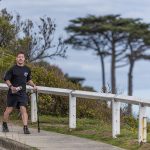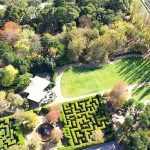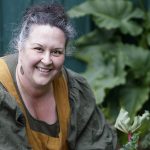
Mt Martha House, circa 1915.
By Gill Gordon – Volunteer Manager of the Historical Collection.
Mount Martha House Community Centre is a local landmark, well known in the area and beyond as ‘the big white building on the corner.’ Now owned and maintained by the Mornington Peninsula Shire, it is revered for its aesthetic charm and carries one of Heritage Victoria’s highest ratings for a Peninsula property. It is highly valued and is greatly used by the community for social and educational purposes.
Origins
The original five acres of land were part of the Mount Martha Sheep Run which was purchased in 1888 by the Mount Eliza Estate Company, a group of wealthy Melbourne businessmen under the chairmanship of Captain Robert Watson. This was one of eight parcels of land bought up around Victoria by this group with a view to opening the land for subdivision.

Map showing pastoral holdings, Port Phillip district, 1840.
Originally known as the Mount Martha Coffee Palace, the building, designed by well-known Melbourne architects Tappin, Gilbert and Dennehy, was constructed over six months in 1889 and opened its doors to wealthy Melbourne residents in February, 1890. Of timber construction in a Federation or Queen Anne Revival architectural style, the
building was arranged in a square shape with an Oxford frame courtyard allowing natural light into the inner bedrooms along the corridors while the communal and working parts of the building were arranged in the corners. The bedrooms looked out onto the fountain centrepiece of the courtyard. The impressive front entrance and low shadowed verandah was set back between projecting north and south wings. The main building survives today.

Mt Martha Coffee Palace shortly after completion.
The Facilities
Early advertising of the Coffee Palace described it as ‘a commodious structure in the cottage style…giving accommodation for nearly 100 guests’ and ‘with fresh milk and saltwater baths in the house with every convenience that modern luxury demands.’ As well as guest rooms, the house boasted a drawing room with Moroccan arches and fine lace window dressings, billiards and smoking rooms, private sitting rooms, a library and a ballroom. There was a free laundering service plus an ‘electronic ironing room.’ The furnishings and fittings consisted of high quality European antiques and the food was equal to any of the best restaurants in the city. A doctor, however, was available.
Fresh water was obtained from a natural spring near South Beach where a dual purpose windmill drew and pumped water into sunken wells behind the house. A separate pipe extracted water for the saltwater baths. Two large underground tanks were later installed to provide water for the local area until mains water eventually arrived.

The drawing room in the grand hotel days.
An advertising brochure from 1893 sets down the rates for a stay at the Mount Martha Coffee Palace: £2-10s a week or £9 for 4 weeks, with an additional charge of 5 shillings a day should the pet dog accompany the party. No details are provided as to whether the dog’s accommodation is ‘high quality European antique’ or otherwise.
A Slight Set Back
The Palace was so popular in its first season that a further 24 rooms were immediately added. The local newspaper, the South Bourke and Mornington Journal, had been particularly optimistic: “The Mount Martha Estate Company intend erecting a coffee palace facing the Bay capable of accommodating about six hundred persons, and also contemplate constructing a jetty and a tramway from the Point to the Mount.” (10 July, 1889). This did not eventuate as the Mount Martha Estate Company collapsed in the early 1890’s but the Palace was rescued when one of the directors, Robert Watson, and shipping magnate and Lord Mayor of Melbourne, Sir Malcolm Donald McEachern, stepped in.
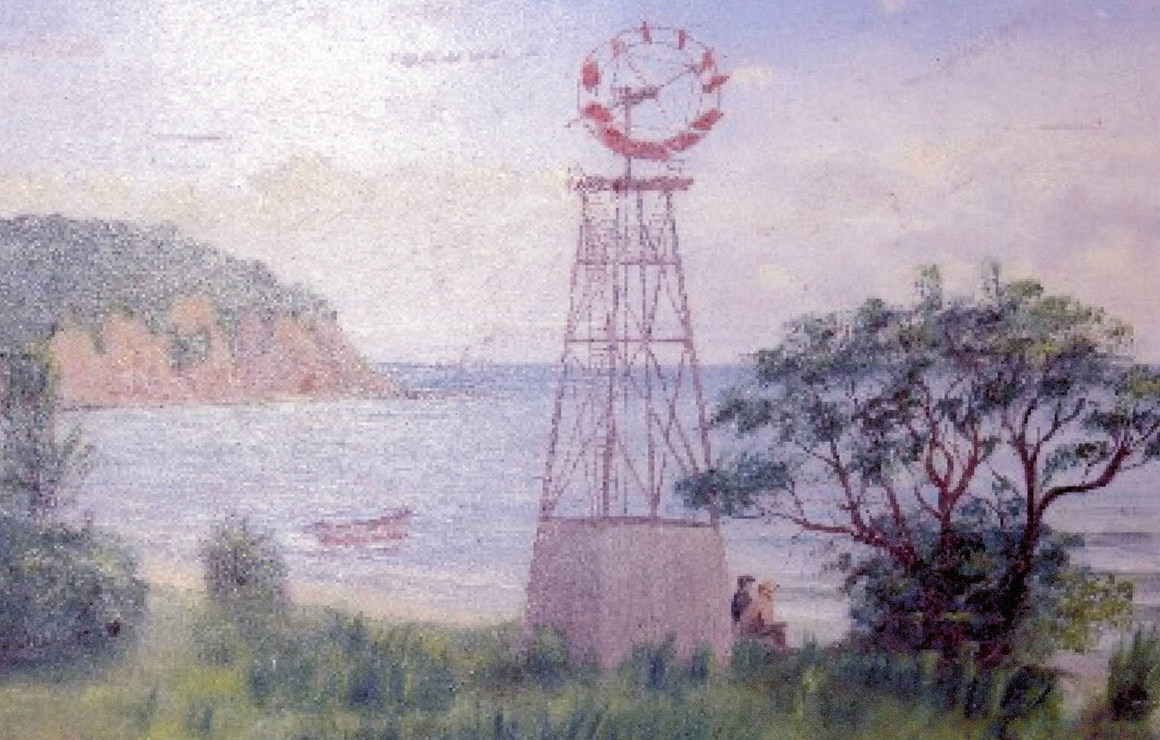
The windmill at South Beach, artist B. J. Bainbridge, 1904.
The Palace, however, continued to flourish as a fashionable establishment under a string of managers who, as was the fashion, were employed for the season and brought with them their clientele. Consequently, this became one of the top six highly successful establishments around Melbourne between 1890 and World War Two. The records show that it was patronized by many well-known wealthy Melbourne and Peninsula leaders of society including State Premier Irvine and the Governor of Victoria, Sir Thomas Brassy. Much later, in the 1940’s, Prime Minister Menzies and his cabinet were in residence. During the 1920’s the Coffee Palace, by then rebadged as the Hotel, also added a 9 hole golf course.

Sir Malcolm McEachern.
The Journey
The journey to the house in the 1890’s would have been an adventure in itself. Guests travelled to Mornington by train, horse and coach, or paddle steamer and then caught Rourke’s Wagonette at the Royal Hotel for the four mile drive; fare one shilling and sixpence. Because there was little access over the estuary until around 1902 the wagonette generally came down Hopetoun Drive from the top of the Mount, using the ford at The Briars.
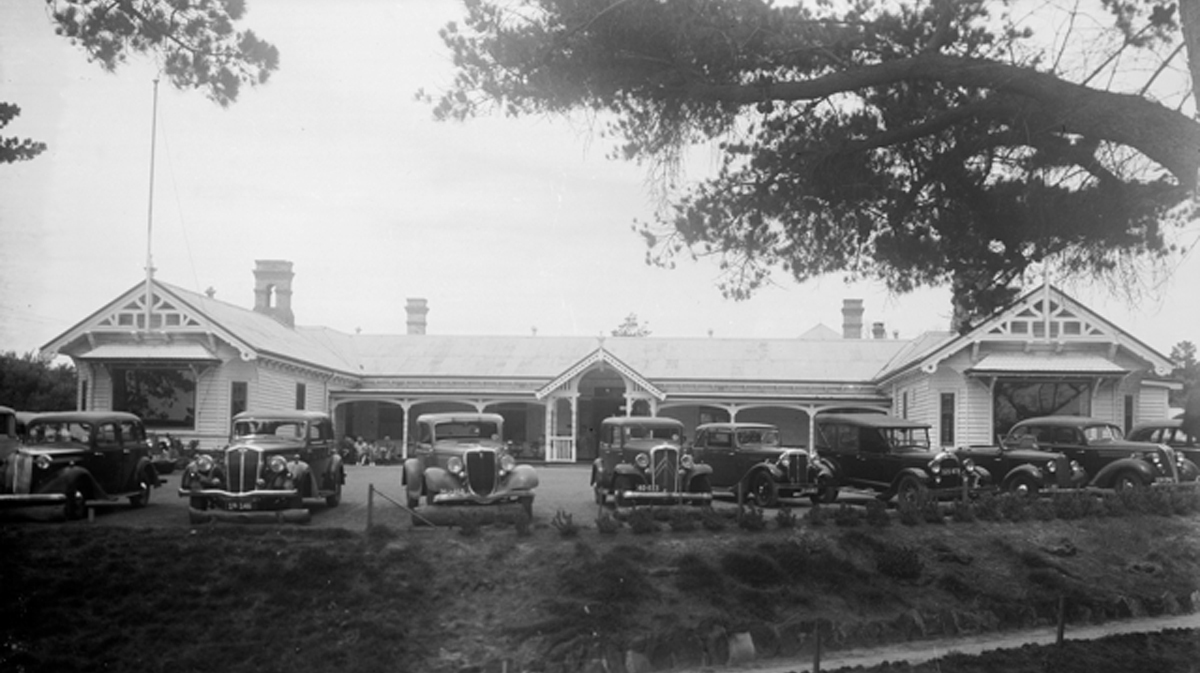
Mt Martha House in the 1930’s with the luxury cars of the day.
One Of The Hazards
Originally the Hotel had no formal gardens with visitors attracted to the Mount Martha vegetation and native flowers in bloom. However early newspaper reports detail a number of local bushfires, including one which was started by a Hotel maid doing the washing in a copper behind the kitchen. She accidentally set fire to the bush which burned across the Peninsula for several days. Guests fled in fear to the beach after dumping their belongings in the road as a precaution.

Concession for those in the Forces at the Golf Links.
Community Roles
Although the building was a guesthouse from its inception until World War Two, it served the community in a number of ways. Apart from providing homes in the area with fresh water from its underground tanks, it was also a post office from 1893 to late 1927. In that year it became the Mount Martha Telephone Exchange. Then, perhaps alerted by the carelessness of the maid, the Pingiano family purchased Mount Martha’s first fire truck, a Chevrolet Blitz, which was stationed in one of the outbuildings from 1942. It was shared by the Balcombe Army Camp and Mount Martha township; it was October 1951 before the Mount Martha Brigade was officially formed.
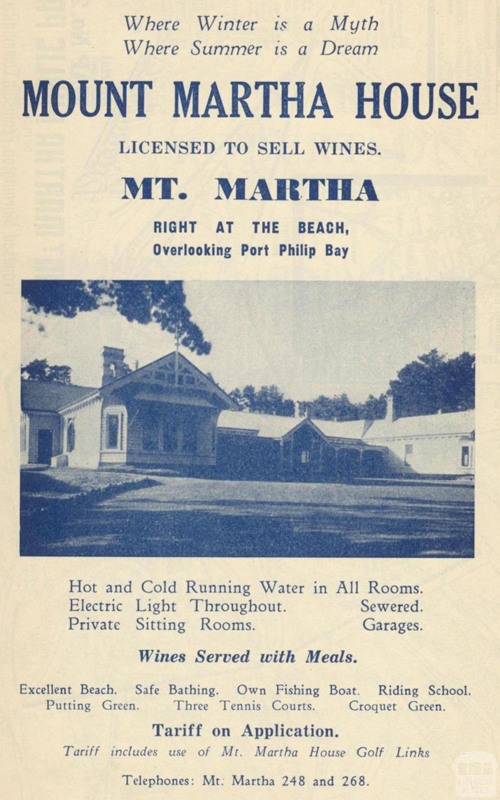
Advertisement promoting Mt Martha House in 1946 (from Broadbent’s Road Guide).
Early Proprietors
Madame Elise Etzensberger, a well-known hotelier from London and then Healesville, purchased Mount Martha Hotel in 1900 and retained ownership until 1916. The story that Madame Etzensberger murdered her husband Robert in the Mount Martha Hotel was shown to be incorrect; he actually died in Germany where he was found floating in a river. This version notwithstanding, it is still believed by many locals that the ghost of Robert Etzensberger is a permanent resident of Mount Martha House.
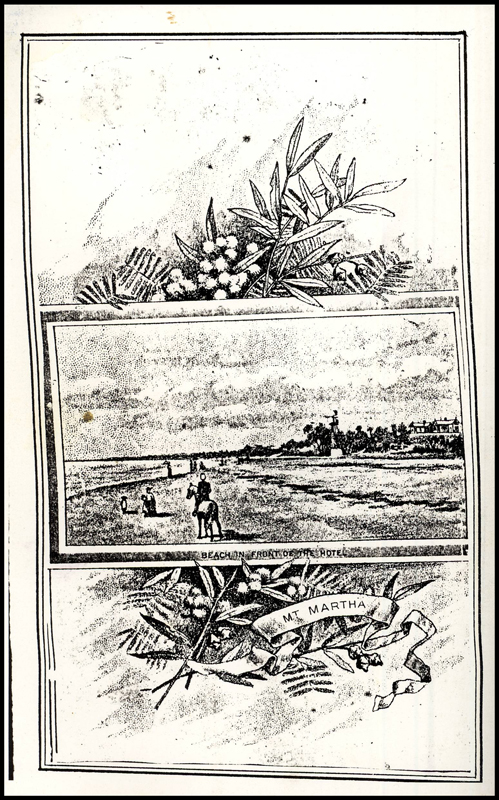
Early advertising, 1890, showing windmill and Mt Martha House in the distance.
Subsequent owners were Annie Ferraro and William Birdling (1916-1922), a syndicate headed by Sir Robert Knox (1922-1936), the Pride family (1936-1946), Miss Hunter and Mr. Smithers (1947), and Sarah and Eric Fordyce (1947-1950). The Mount Martha House Golf Links, located on the original Domain property, was not in the Fordyce sale; the area was subdivided for housing.
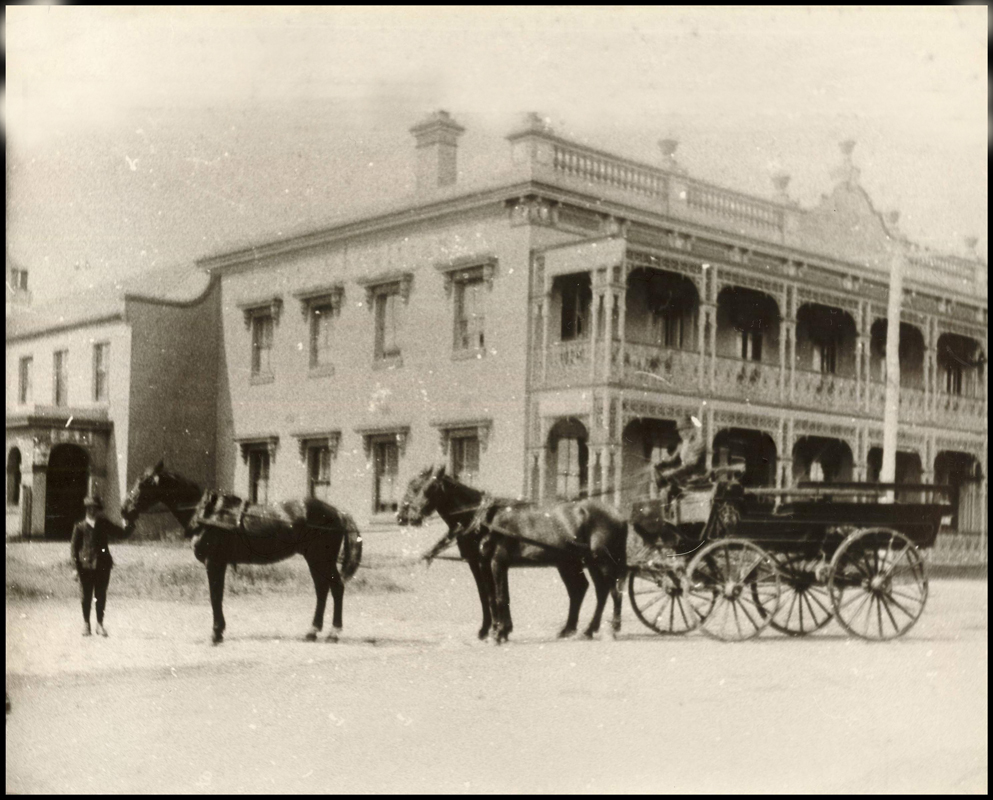
‘Rourke’s Wagonette’ departs from The Royal
Although it is understood that the Hotel closed for a short time in the Depression years, the opening of the current Esplanade, built under a government employment scheme, was celebrated on the Hotel forecourt in 1936. The growth of motor traffic was to the advantage of the Hotel, as was the supply of electricity and the telephone. The change in the law which permitted women to swim at Australian beaches was another plus as the Mount Martha South beach became very popular.

The Esplanade Drive from the south, two miles long, with Mt Martha Hotel in the distance.
The War Years
During World War Two the Hotel, along with a number of nearby holiday homes, was requisitioned by the military. Mount Martha became known as ‘Canvas City’ as a large number of Australian troops were stationed around the building and entry to the village was by permit only. Then in 1942 the Hotel became Australia’s first RAAF Officers Training School; it was referred to as ‘The Command Centre.’
In 1946 it is thought that the Hotel, along with some private residences, housed a number of Dutch Javanese prisoners of war for about six months.

The bridge across Balcombe Creek, 1904, with the hotel in the distance (artist B. J. Bainbridge).
Post War
Walter Pride, who had remained in residence during the war years, resumed operations as a hotel in 1946 before selling to Miss Hunter and Mr. Smithers. Their ownership was brief as the Fordyces bought the property in 1947 although the golf course was excluded. The loss of this amenity was a factor in the Hotel going into decline and the local paper reported seepage onto the beach from the Hotel’s septic tank.
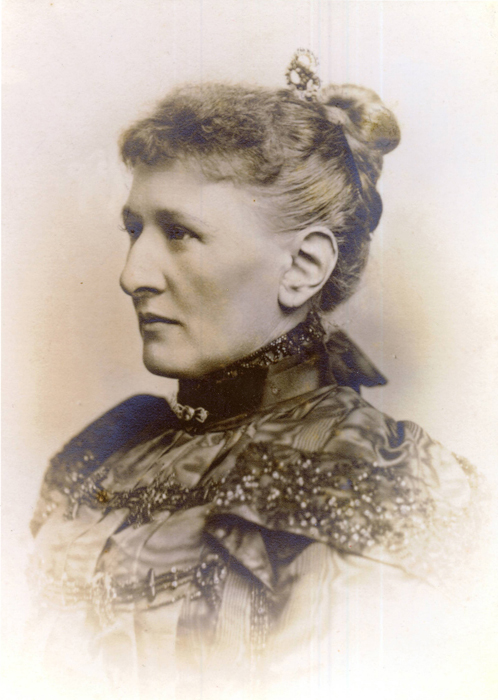
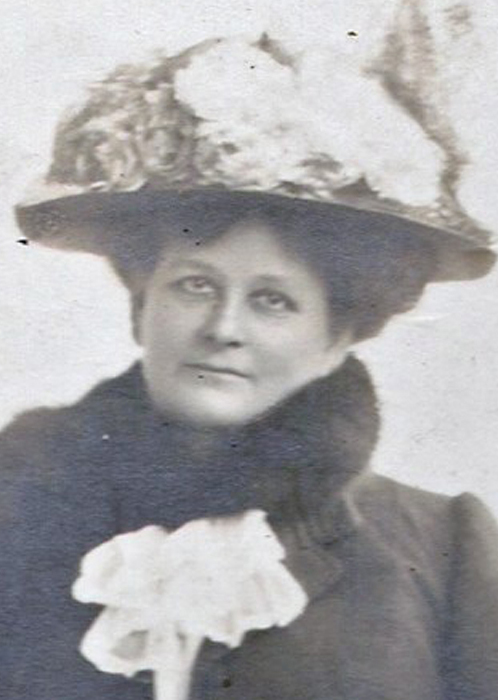
Left: Madame Elise Etzensberger. Right: Annie Elizabeth Atkins Ferraro
Following the closure of the Hotel, the building was purchased by the army and from 1952 to 1974 it provided accommodation for the Women’s Royal Australian Army Corps (WRAAC), known as 30 WRAAC Barrack. A small group of Royal Australian army nurses were also in residence. The WRAAC members, about 80 in number, attended the nearby Balcombe Army Camp each day where they attended courses in signals and carried out other duties.
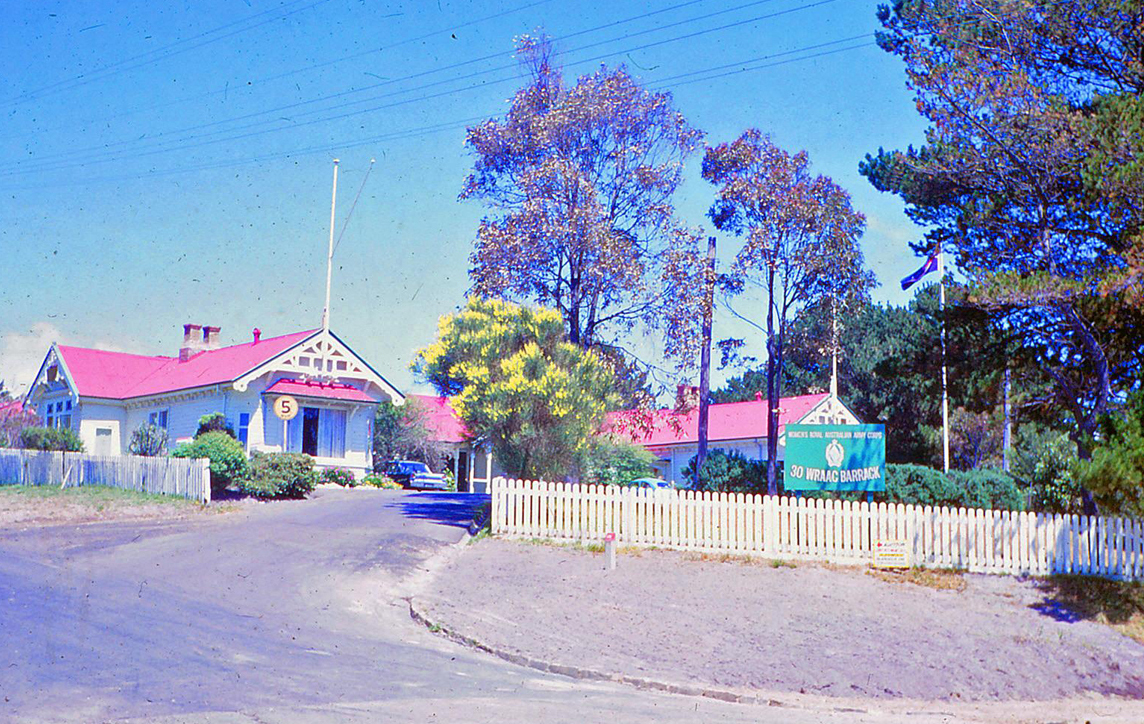
Mt Martha House in the WRAAC era (note departure from the original colour scheme).
By 1976 the building had become derelict and a group of locals persuaded the Shire of Mornington to purchase the property for the use and benefit of the community. Two years later it was opened as a Community Centre.
Today
This beautifully refurbished historic property is now home to the Neighbourhood House program, providing a living and learning environment for children through to adults. A diverse program of daytime and weekend classes, courses and club activities are also offered at the House. These range from craft to dancing, mah-jong to scrabble, as well as being the base for groups such as Probus clubs, the Model Railway Club and a Walking Group. It has been the home for several churches, a scout troop and a tennis club. The building even hosts a kindergarten. Rooms can be hired for commercial, private or community purposes.
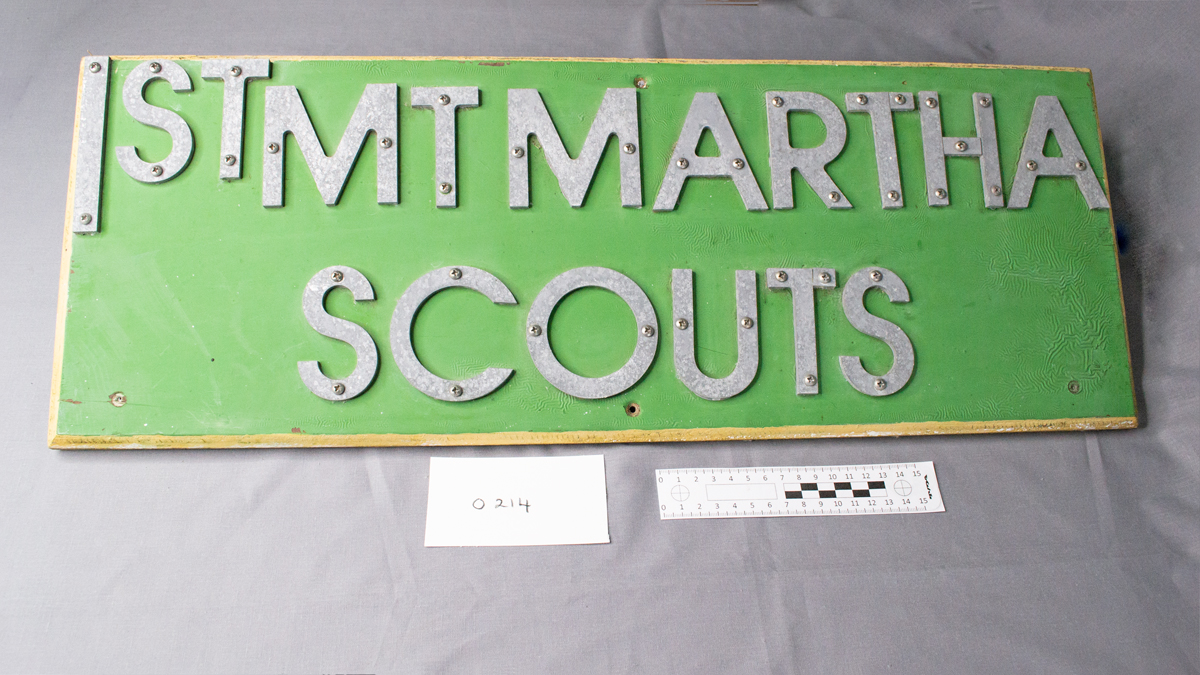
Just one of the many occupants.
Aside from being the centre for a wide variety of activities, the Mount Martha House Historical Collection aims to collect, preserve and protect the people, history and heritage of Mount Martha House and community. The Collection, staffed by volunteers, has several dedicated rooms: one for an historical display, one set up as a replica of a WRAAC bedroom, and two work rooms. The history is freely available on podcasts to download.
Monthly in-house tours are available and bookings can be made at the Community Centre front office. The Collection volunteers are also available to visit organizations and give talks on the history of the House. Volunteers also undertake the recording of local stories and the preservation and digitization of the material to make it accessible to the community. A welcome is extended to visitors, people returning to their old ‘home’, and those who wish to relate stories of individuals, groups or organizations associated with Mount Martha House.
“It’s the people who make Mount Martha House, and we aim to bring these people to life and honour our local community.”
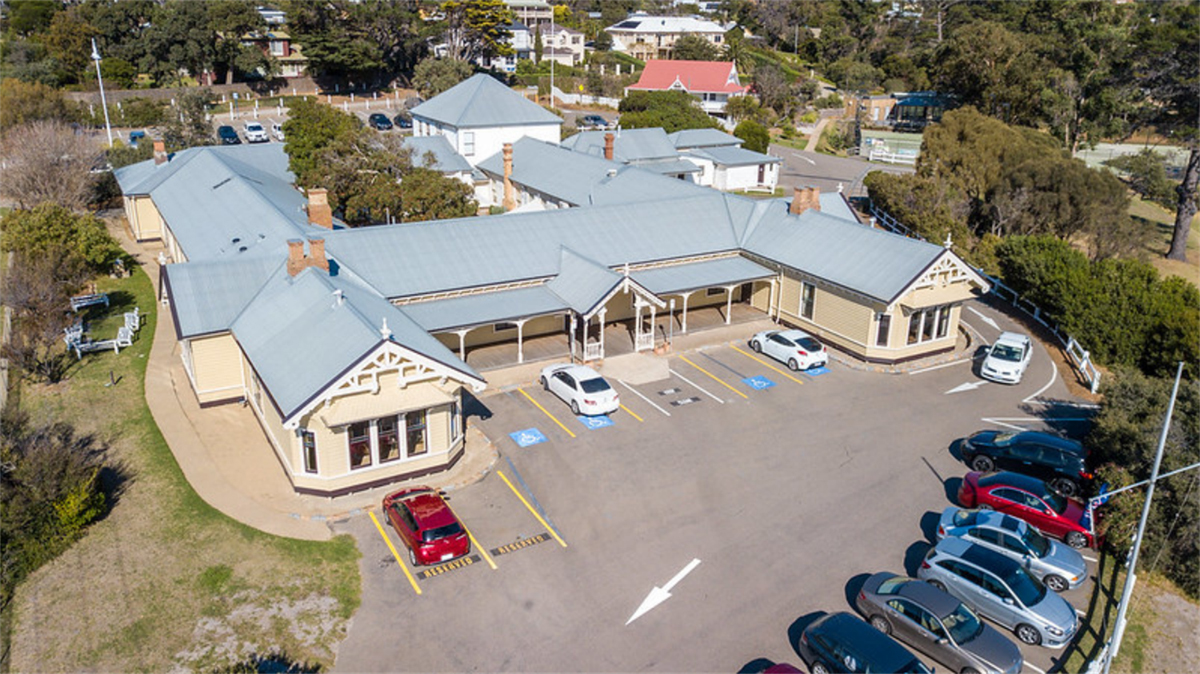
A recent photograph of Mt Martha House (original colour scheme restored).
REFERENCES:
“A Never Ending Journey – The Story of Victoria’s Mornington Peninsula”-Malcolm H.B. Gordon, Ranelagh Publishing House, 2021.
Photographs by kind permission of Mornington Peninsula Shire.
Copies of the paintings by B.J. Bainbridge were donated to the Collection by the late Roy Flood.
FOOTNOTE:
During the Shire’s Link Festival in April 2023 the Mount Martha House Historical Collection will be open. Please telephone 59742297 for details of tours and talks.

